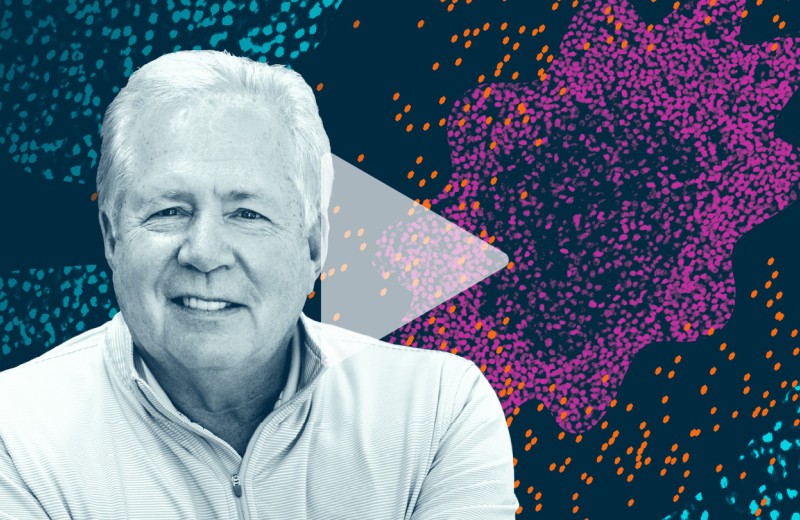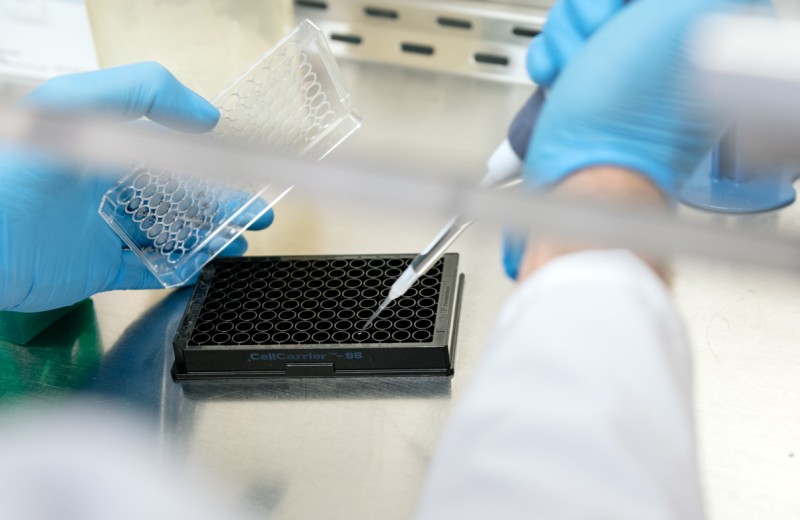Gladstone NOW: The Campaign Join Us on the Journey✕

SAN FRANCISCO, CA—Perhaps the single greatest barrier to curbing the spread of HIV/AIDS is the dormant, or “latent,” reservoir of virus, which is out of reach of even the most potent medications. But now, scientists at the Gladstone Institutes have uncovered new clues that may help researchers awaken HIV from its slumber—laying the foundation for purging all trace of the virus, and for one day finding a cure for the more than 34 million people worldwide living with HIV/AIDS.
In a paper being published today in PLOS ONE, researchers in the laboratory of Gladstone Investigator Warner C. Greene, MD, PhD, have uncovered the molecular signals that guide the activation of latent HIV. Specifically, they showed how molecular crosstalk between calcium and an enzyme called calcineurin, along with a molecule called prostratin, switch on members of the NF-κB family of proteins—thereby activating latent HIV. These findings point to a new strategy of artificially activating HIV—a process that experts believe is key to flushing out all evidence of infection and developing a cure for HIV/AIDS.
During the initial stages of HIV infection, often within hours, the virus infects a type of white blood cell called CD4 T cells. In the majority of cases, HIV then hijacks the cell’s DNA to produce, or “transcribe,” new virus, infecting more cells. But every so often something different happens: the viral DNA inserts itself into the host cell’s DNA, but then stops, maintaining a holding pattern that can persist for decades. This latent HIV is virtually undetectable and therefore cannot be targeted by medication.
“Current treatments, which involve a complex cocktail of antiretroviral (ARV) medications, are fine-tuned to target and destroy active, replicating HIV—but they can’t touch the latent virus,” explained Dr. Greene, director of virology and immunology research at Gladstone and professor of medicine at the University of California, San Francisco, with which Gladstone is affiliated. “But most troublingly is that within weeks of stopping ARV treatment, the latent virus wakes up, and the cycle of replication and infection begins all over again.”
What this means for patients is a lifetime of treatment with expensive ARVs. This is an unsustainable strategy in today’s world, where more than two-thirds of those infected live in the developing world and have limited access to ARVs. And for every 10 people who do receive ARVs, 16 become newly infected.
Recently, researchers have championed the “shock-and-kill” strategy for combating HIV latency. This approach would activate the latent virus, and then bombard this newly active virus with ARVs. Precisely how to do so has been fraught with difficulty. But in this study, Dr. Greene and his team have identified a potential strategy.
In laboratory experiments using latent HIV introduced into CD4 cells from donors or cell culture, the research team tested a series of proteins believed to regulate activation and transcription of the virus. One such family of proteins, called NFAT, was previously shown to induce HIV transcription during the initial stages of infection. So the researchers tested whether it would also function in activating latent HIV.
“Surprisingly, NFAT didn’t appear to play a central role so we went back to the drawing board, exploring other protein families we thought might be involved,” said Gladstone Postdoctoral Fellow Jonathan Chan, PhD, the paper’s lead author. “Interestingly, we observed that members of the NF-κB protein family appeared to act as a molecular alarm clock, rousing latent HIV and spurring viral replication.”
Even more interesting was what they observed when they added prostratin to the mix. Prostratin, a naturally occurring compound that is extracted from the Samoan mamala tree, helps to activate latent HIV. But prostratin is difficult to procure and, as of right now, impossible to synthesize on an industrial scale. Now, the experiments performed by Drs. Greene and Chan suggest a potential workaround.
“When we stimulated the calcium/calcineurin pathway in the presence of low levels of prostratin, we in turn boosted prostratin’s effectiveness,” explained Dr. Chan. “These findings, while preliminary, hold promise that we could develop a way to purge the latent HIV reservoir with even suboptimal levels of prostratin.”
“Our results give us much-needed insight how the shock-and-kill approach to eliminate the virus might work,” said Dr. Greene. “Slowly but surely we are finding new components of a cure cocktail that might be able—at long last—to realize a broadly applicable and scaleable cure for HIV/AIDS.”
Darshanna Bhattacharyya, Kara Lassen and Debbie Ruelas also participated in this research at Gladstone, which was funded by the National Institute of Health grant #U19 AI096113.
40 Years of HIV Research: Celebrating the Career of Virologist Warner Greene
40 Years of HIV Research: Celebrating the Career of Virologist Warner Greene
Colleagues look back on Warner Greene's 40 year career
Gladstone Experts History HIV/AIDS Infectious Disease Greene LabTips from Virologists to Face the “Tripledemic” This Holiday Season
Tips from Virologists to Face the “Tripledemic” This Holiday Season
Gladstone scientists answer questions about the convergence of COVID-19, RSV, and the flu this winter
Gladstone Experts COVID-19 Infectious Disease Greene Lab Ott Lab Roan LabWhen Will This Pandemic End?
When Will This Pandemic End?
And other questions you have about Omicron and the pandemic
Gladstone Experts COVID-19 Infectious Disease Greene Lab Ott Lab Roan Lab



